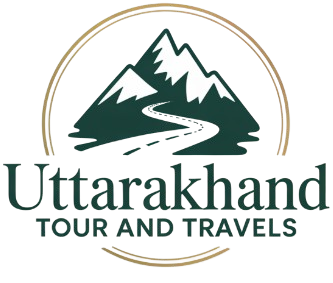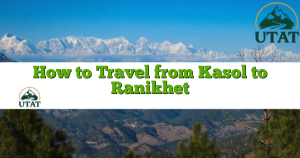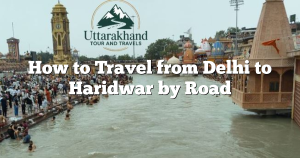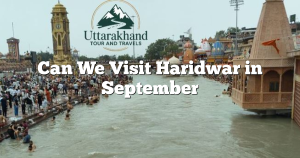Undertaking the Char Dham Yatra is a deeply spiritual and adventurous journey. It requires careful planning and preparation to ensure a safe and fulfilling experience. Here’s a comprehensive guide on how to approach and complete this sacred pilgrimage to Yamunotri, Gangotri, Kedarnath, and Badrinath.
How to Do Char Dham Yatra: Yatra Guide
1. Plan Your Trip Meticulously
Choose the Best Time to Travel
The Char Dham temples are usually open from late April/early May to late October/early November.
- Peak Season (May-June): Pleasant weather, but heavy crowds mean longer queues and higher prices. Book everything well in advance.
- Monsoon (July-August): Not recommended due to heavy rainfall, increased risk of landslides, and road closures.
- Post-Monsoon (September-October): Ideal time. Clear skies, pleasant weather, and relatively fewer crowds than the peak season.
Decide on Your Mode of Transport
This significantly impacts the duration and cost of your Yatra.
- By Road (Bus/Taxi/Private Car):
- Duration: Typically 10-12 days for a comfortable journey from Haridwar/Rishikesh.
- Accessibility: Most common. You’ll drive to the nearest motorable points (Janki Chatti for Yamunotri, Gangotri temple town, Gaurikund for Kedarnath, and Badrinath temple town).
- Treks: Requires significant trekking (approx. 6 km one-way for Yamunotri, 16-18 km one-way for Kedarnath). Ponies, mules, and palanquins are available for hire.
- Cost: Most budget-friendly option.
- By Helicopter (Char Dham Helicopter Tour):
- Duration: 2-5 days, usually starting from Dehradun.
- Accessibility: Fastest option, ideal for those with limited time or physical constraints. Direct helicopter services operate to helipads near Kedarnath and Badrinath, with shuttles/short treks for Yamunotri and Gangotri.
- Cost: Significantly more expensive. Highly weather-dependent.
- Mixed Mode: A combination of road travel for some Dhams and helicopter for others (e.g., helicopter for Kedarnath, road for the rest) is also popular.
Select Your Starting Point
- Haridwar/Rishikesh: Most common starting points for road trips, well-connected by rail and road to major Indian cities.
- Dehradun: The primary hub for helicopter services, also has an airport (Jolly Grant Airport).
Prepare Your Itinerary
A typical clockwise route for road trips is:
- Haridwar/Rishikesh to Barkot (base for Yamunotri)
- Barkot to Janki Chatti and trek to Yamunotri
- Janki Chatti/Barkot to Uttarkashi (base for Gangotri)
- Uttarkashi to Gangotri
- Gangotri to Guptkashi/Sonprayag (base for Kedarnath)
- Sonprayag to Gaurikund and trek to Kedarnath (overnight stay recommended near Kedarnath temple or base camp)
- Kedarnath to Gaurikund/Sonprayag and travel to Badrinath
- Badrinath darshan
- Return to Rishikesh/Haridwar/Dehradun
2. Mandatory Registration
- Online Registration (Recommended):
- Visit the official Uttarakhand Tourist Safety Management System (TSMS) portal:
https://registrationandtouristcare.uk.gov.in/ - Create an account, fill in your personal details, tour plan (dates for each Dham), and upload a photo and valid ID (Aadhaar Card, Voter ID, Passport, Driving License).
- You’ll receive a unique QR code via SMS and can download a registration letter.
- Visit the official Uttarakhand Tourist Safety Management System (TSMS) portal:
- Mobile App Registration: Download the ‘Tourist Care Uttarakhand’ app and follow similar steps.
- WhatsApp Registration: Send “Yatra” to +91 8394833833 and follow the prompts.
- Offline/Biometric Registration: Counters are available at key locations like Haridwar, Rishikesh, Janki Chatti, Sonprayag, and others. This involves filling forms and providing biometric data.
- Important: Registration is FREE and MANDATORY. Carry your QR code (digital and printout) as it will be checked at various checkpoints.
3. Health and Fitness Preparation
- Medical Check-up: Consult your doctor, especially if you have pre-existing conditions (heart, asthma, diabetes). The high altitude and strenuous treks can be challenging.
- Acclimatization: Allow a day or two for acclimatization at lower altitudes (like Barkot, Uttarkashi, Guptkashi) before proceeding to higher shrines.
- Physical Fitness: Engage in light exercises like walking or jogging for a few weeks before the Yatra to build stamina for the treks.
- Basic First-Aid Kit: Carry essential medicines for fever, pain, cold, cough, upset stomach, antiseptic, band-aids, muscle relaxants, and any personal medications.
4. Packing Essentials
- Clothing: Layers of warm clothing (thermals, sweaters, fleece jackets, woolens), including waterproof and windproof jackets. Even in summer, evenings can be very cold.
- Footwear: Comfortable, sturdy, waterproof trekking shoes with good grip. Extra socks.
- Rain Gear: Raincoat/poncho and umbrella.
- Personal Items: Toiletries, hand sanitizer, personal medicines.
- Documents: Original and photocopies of ID proof, registration letter, helicopter tickets (if applicable), and travel insurance.
- Cash: ATMs are limited along the route; carry sufficient cash for small expenses.
- Snacks: Energy bars, dry fruits, chocolates.
- Other Essentials: Power bank, flashlight/headlamp, basic toiletries, sunscreen, lip balm, sunglasses, walking stick, water bottle (refillable).
5. During the Yatra
Travel and Road Safety
- Hiring Vehicles: If hiring taxis, ensure the driver is experienced in mountain driving.
- Road Conditions: Roads can be narrow, winding, and prone to landslides, especially during monsoon. Travel is often restricted after sunset.
- Breaks: Take frequent breaks during long drives to rest and acclimatize.
Accommodation and Food
- Book in Advance: Especially during peak season, pre-book hotels/guesthouses at major halts (Barkot, Uttarkashi, Guptkashi, Badrinath).
- Basic Facilities: Accommodation in remote areas might be basic. Expect simple vegetarian food.
- Stay Hydrated: Drink plenty of water to prevent dehydration and altitude sickness. Avoid oily or heavy food.
Safety and Security
- Stay on Marked Paths: Especially during treks, stick to designated routes.
- Follow Guidelines: Adhere to instructions from local authorities and temple management.
- Avoid Overexertion: Listen to your body and rest when needed.
- Emergency Numbers: Keep emergency contact numbers (police, medical, tourist helpline) handy.
Respectful Conduct
- Dress Modestly: Especially when visiting temples.
- Maintain Cleanliness: Dispose of waste properly and do not litter.
- Respect Local Culture: Be mindful of local customs and traditions. Photography might be restricted inside temples.
6. Post-Yatra
After successfully completing the Char Dham Yatra, you can download a ‘Yatri Darshan Certificate’ from the same registration portal, which serves as a memento of your spiritual journey.
Undertaking the Char Dham Yatra is a truly transformative experience. By planning well, staying informed, and approaching the journey with reverence and caution, you can ensure a memorable and spiritually enriching pilgrimage.









